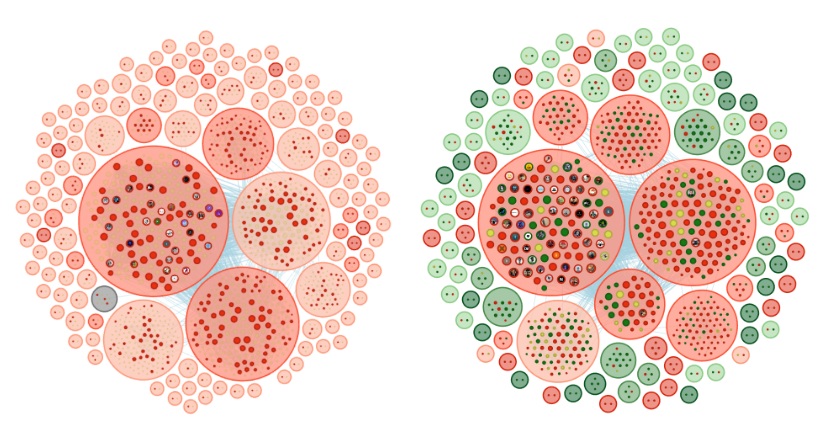What Is OSINT in Cyber Security
In today’s interconnected world, the ability to gather actionable intelligence from publicly available sources has become a cornerstone of cyber security. Open-Source Intelligence (OSINT) refers to the process of collecting, analyzing, and leveraging data from publicly accessible sources to support security operations, threat detection, and decision-making. From social media platforms to public records, OSINT encompasses a wide range of data that can provide critical insights into potential threats, vulnerabilities, and adversarial activities. Companies like Knowlesys, a leading provider of OSINT monitoring systems, empower organizations to harness this intelligence effectively, particularly for the intelligence communities in regions like the United States and the Middle East.
Understanding OSINT: Definition and Scope
OSINT is defined as intelligence derived from publicly available information that is collected, exploited, and disseminated in an ethical and legal manner. Unlike classified or covert intelligence, OSINT relies on sources that anyone can access, such as websites, social media, news outlets, blogs, public databases, and even satellite imagery. In the context of cyber security, OSINT is used to identify threats, track malicious actors, monitor vulnerabilities, and enhance situational awareness.
The scope of OSINT is vast. For example, it can involve analyzing a hacker’s social media activity to uncover their tactics, monitoring dark web forums for leaked credentials, or tracking geopolitical events that may impact cyber operations. The versatility of OSINT makes it an invaluable tool for intelligence agencies, law enforcement, and private sector organizations alike.
Why OSINT Matters in Cyber Security
The intelligence communities in the United States and the Middle East face a complex and evolving threat landscape. From state-sponsored cyber attacks to lone-wolf actors and organized cybercrime groups, the need for timely and accurate intelligence is paramount. OSINT addresses several critical needs:
- Threat Detection and Prevention: OSINT enables organizations to identify early warning signs of cyber threats, such as phishing campaigns or data breaches, by monitoring public chatter on platforms like X or Reddit.
- Attribution and Tracking: By analyzing digital footprints, OSINT can help attribute cyber attacks to specific actors or groups, a priority for U.S. and Middle Eastern intelligence agencies combating regional threats.
- Geopolitical Insights: Publicly available data, such as news reports or government publications, can provide context for cyber operations influenced by geopolitical tensions, particularly in the Middle East.
- Cost-Effectiveness: Unlike traditional intelligence methods, OSINT leverages freely available data, making it a cost-efficient approach for organizations with limited resources.
Knowlesys, with its advanced OSINT monitoring systems, plays a pivotal role in helping organizations streamline these processes. Its tools enable real-time data collection and analysis, allowing intelligence professionals to stay ahead of emerging threats.
OSINT Techniques and Tools
OSINT practitioners employ a variety of techniques to gather and analyze data. These include:
- Social Media Intelligence (SOCMINT): Monitoring platforms like X, LinkedIn, or Telegram for threat indicators, such as discussions about vulnerabilities or planned attacks.
- Web Scraping: Extracting data from websites, forums, or public APIs to identify patterns or anomalies.
- Geospatial Analysis: Using satellite imagery or geolocation data to track physical infrastructure or activities linked to cyber threats.
- Dark Web Monitoring: Investigating marketplaces or forums where stolen data, malware, or hacking tools are traded.
Tools like Knowlesys’ OSINT platforms enhance these techniques by automating data collection, providing advanced analytics, and integrating multiple data sources into a cohesive intelligence picture. For intelligence communities in the U.S. and Middle East, such tools are critical for addressing region-specific challenges, such as monitoring extremist groups or tracking foreign influence campaigns.
Challenges and Ethical Considerations
While OSINT is a powerful tool, it comes with challenges. The sheer volume of publicly available data can be overwhelming, requiring sophisticated filtering and analysis to separate signal from noise. Additionally, ensuring the accuracy and reliability of OSINT data is crucial, as misinformation or biased sources can lead to flawed conclusions.
Ethical considerations also play a significant role. OSINT practitioners must operate within legal boundaries, respecting privacy laws and avoiding unauthorized access to private data. For organizations in the U.S. and Middle East, where regulatory frameworks differ, tools like those provided by Knowlesys ensure compliance by focusing on publicly accessible data and adhering to ethical standards.
OSINT in Action: U.S. and Middle East Perspectives
In the United States, OSINT is widely used by agencies like the FBI and Department of Homeland Security to combat cyber threats, including ransomware and foreign espionage. For example, OSINT has been instrumental in tracking disinformation campaigns linked to adversarial nations, a growing concern in the lead-up to elections.
In the Middle East, OSINT is critical for monitoring regional conflicts and their cyber implications. Intelligence agencies in countries like Israel and Saudi Arabia use OSINT to track terrorist organizations, monitor cyber warfare activities, and safeguard critical infrastructure. Knowlesys’ OSINT solutions are particularly valuable in these contexts, offering tailored monitoring capabilities that address the unique needs of Middle Eastern intelligence communities.
Conclusion
Open-Source Intelligence is a game-changer in the realm of cyber security, providing a wealth of actionable insights from publicly available data. For intelligence communities in the United States and the Middle East, OSINT is not just a tool but a strategic asset in navigating today’s complex threat landscape. Companies like Knowlesys are at the forefront of this transformation, offering advanced OSINT monitoring systems that empower organizations to detect threats, attribute attacks, and make informed decisions. As cyber threats continue to evolve, the role of OSINT—and the tools that support it—will only grow in importance.
